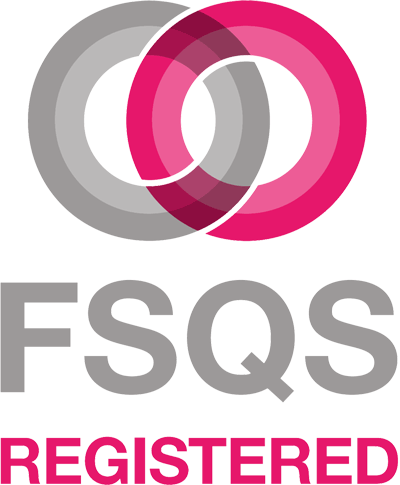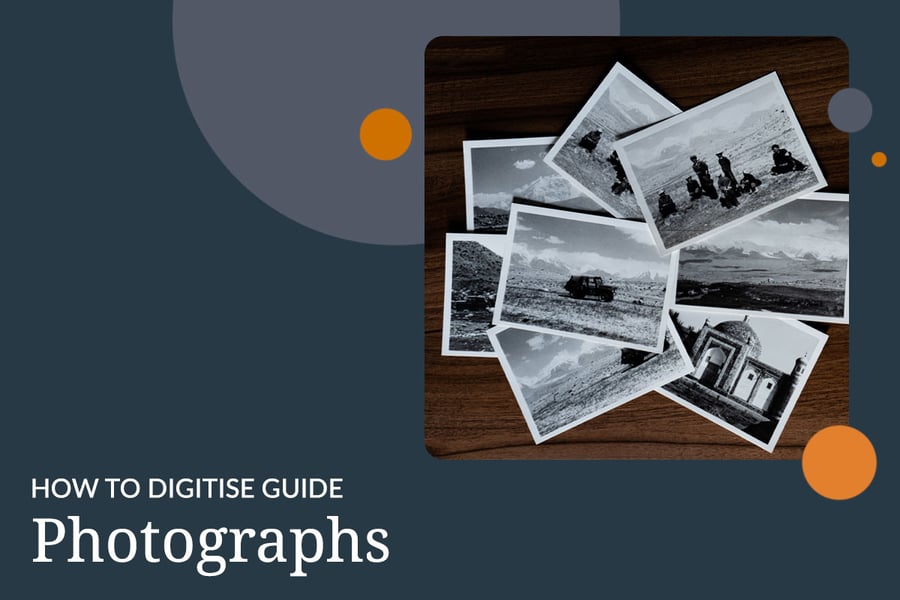
Digitisation is a complex process and many aspects need to be considered in order to produce the best quality images. This is especially true when digitising very old and fragile archive materials, something our scanning technicians do every day. But there are a number of additional media-specific challenges that arise when digitising particular types of archival content, such as this.
To help you better understand what’s involved when it comes to digitising photograph collections, we’ve combined our in house expertise, and years of industry experience, to create 7 Top Tips. These should help to explain the specific practices we follow to ensure top quality digitisation results, every time.
Digitising Photograph Collections – 7 Best Practice Tips
1. Preparation
Checking the collection and preparing it for the scanning process is absolutely vital in ensuring the items do not suffer any damage as a result.
National Archives guidelines recommend assessing materials for general fragility, signs of mould and any other signs of damage, as part of the preparation stage, to make sure the materials are stable enough to undergo the digitisation process. Further guidance can be found here.
You may find tiny specs of dust and dirt that have collected on the surface of your photographs over time, which can adversely affect the quality and clarity of the digitised images produced. To remove this dirt, photographs can be lightly dusted with a hand held bulb duster (air blower) but it is important to consider the condition of the photographs first, to avoid any further damage to the image.
2. Equipment - Choosing the best option for your material
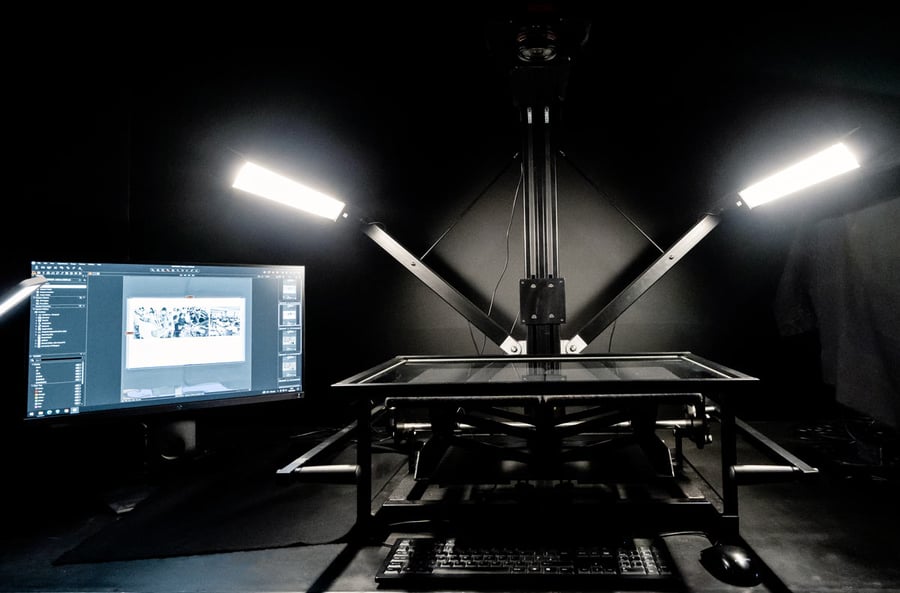
There may be tiny specs of dust and dirt that have collected on the surface of your photographs, which can adversely affect the quality and clarity of the digitised images produced. To remove this dirt photographs can be lightly dusted with a hand held bulb duster (air blower) but it is important to consider the condition of the photographs first, to avoid any further damage to the image.
3. Resolution & format
Photographs will generally require a greater resolution than text based volumes, like journals or diaries, although this depends, to a degree, on the purpose of the digitisation project.
We always recommend digitising photographic collections to an uncompressed, high resolution Master TIFF format, in the first instance. The pixels per inch (ppi) will vary according to the size of the original material and the target final size. We recommend that the captured image at the final size (i.e. 10” x 8”) is not less than 300ppi. However, if the print is really big then 200ppi may be necessary, and for smaller items, if using a good quality camera, 600ppi may be possible.
Many different derivatives or “digital surrogates” can then be produced from this master TIFF file, to fulfill different purposes, such as reprinting photographs directly from the Master TIFF or producing lower resolution compressed JPEG files for display on the web.
4. Use a colour key to manage colour capture
If digitising colour photographs and maintaining colour integrity is important to the project, a colour key (pictured) should be used for calibrating your image capture device, using several test images at the beginning of each batch. This will help ensure colours are captured in their truest form.
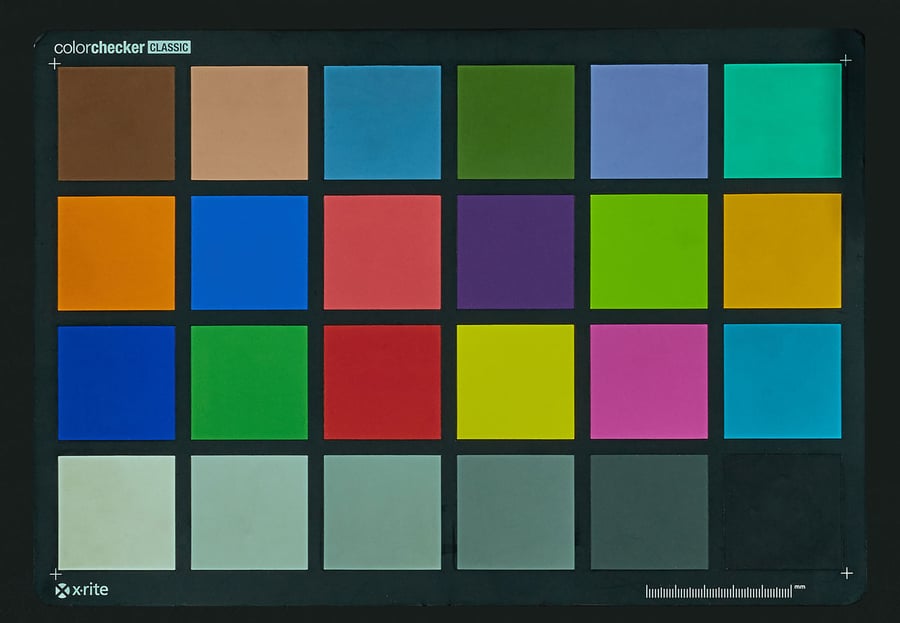
5. Group photographs that are similarly sized
Grouping together photographs of similar sizes will help minimise the calibration of equipment during the scanning process, thereby maximising efficiency and digitisation workflow.
6. Handle by the edges
As with any fragile archival material, it is vital to take great care when handling photographic collections. This goes for preparing them for digitisation, as well as the actual scanning process itself.
To mitigate potential damage, and to avoid fingerprints appearing on the image, photographs should be handled delicately and by the edges. In addition, in accordance with The National Archives Policy, we recommend wearing unpowdered nitrile/latex protective gloves to prevent acidic oils from the hands causing damage to the items.
7. Assess your capabilities before beginning
Finally, and possibly most importantly, is assessing your capabilities in carrying out the digitisation of your photograph collection in advance.
The cost of purchasing appropriate equipment to scan your collections to sufficient quality, without harming them, can be significant. Even if your organisation does possess suitable equipment to undertake the digitisation in-house, often the quality of the images may not match that of an external provider, and so the throughput rate may be significantly reduced. In-house staff also typically have time limitations to think of and might require training; these are important aspects for consideration .
What Next?
We hope this blog proves helpful in understanding how to best digitise your photograph collections and we wish you the best of luck with your project. However, should you prefer to outsource your digitisation project, take a look at the specialist services we offer below:
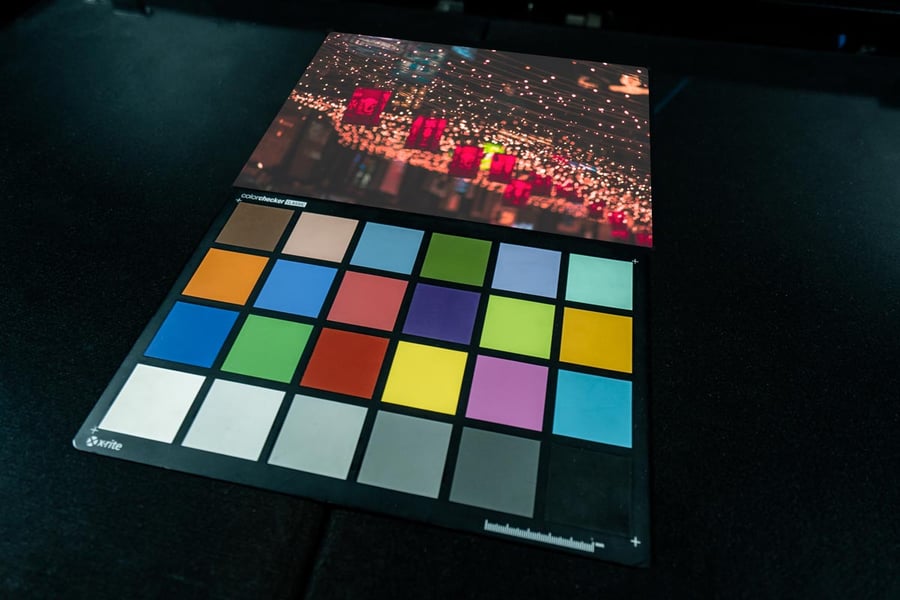
Digitisation
Our specialist scanners and digitisation equipment are able to scan all of your photograph collections, and we have extensive experience in handling even the most delicate and fragile of items. We can scan your photograph collections at high resolution, converting them to digital format, including TIFF and JPEG files. Our consultants are always happy to discuss your requirements and you can find out more about our digitisation services or contact us to discuss your individual requirements.
Data Capture
Digitisation provides the perfect opportunity to capture the valuable data contained within your photograph collections and readies this for system integration and online access and discovery. Our handwritten transcription service, for example, can identify any handwritten or cursive script that might appear within your collection, converting this to searchable and machine readable textual metadata, outputting to any format.
PastView
Digitisation and Data Capture prime your photograph collections for fluid integration into our PastView platform, enabling you to take advantage of a full range of features for enhanced online access and discovery, such as advanced search, featured collections, print facilities, and watermarking.
Photographic collections are often the most visually appealing and the most sought after part of any archive, making them an important medium for digitisation and ultimate discovery and access.
At TownsWeb Archiving we have undertaken many photographic digitisation projects to include old, fragile, faded, and framed photographs of unusual sizes and materials. We take special care, producing the very best results and image quality.
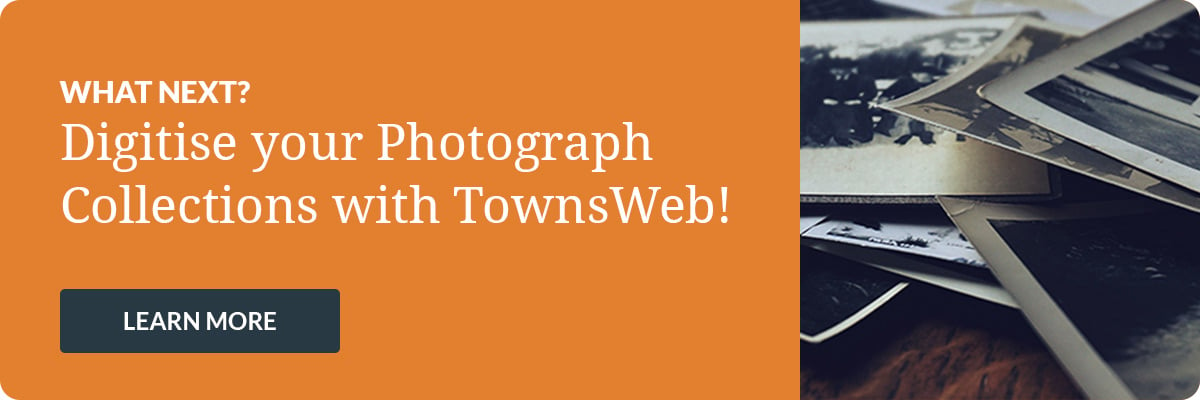


 USE OUR ONLINE
USE OUR ONLINE

